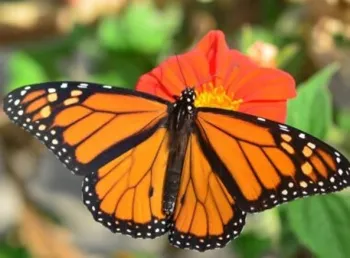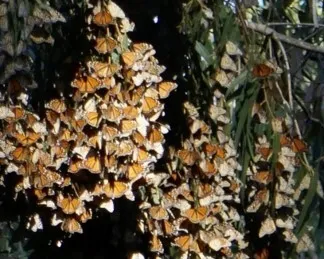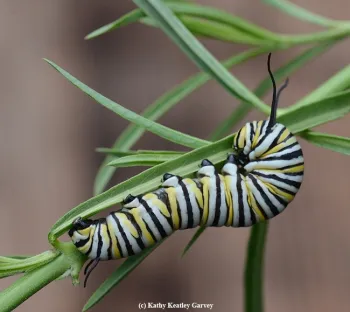How Did the Western Monarchs Do This Winter in California?

Monarchs in Trouble
The colorful orange-and-black, magnificent monarch butterflies (Danaus plexippus) are the world's most recognized and beloved butterflies. Yet, they are increasingly in danger of becoming extinct. An announcement last summer from International Union for Conservation of Nature (IUCN) announced the monarch butterfly had been put on its "Red List of Threatened Species as Endangered” due to habitat destruction, climate change, and pesticides, with the primary reason being reduction in milkweed plants that are so vital to their survival.

This Year's Status
According to a recent article by Tara Duggan (https://www.pressreader.com/usa/san-francisco-chronicle-late-edition/20230201/281595244675872) the 2022 annual Thanksgiving count organized by Xerces Society showed relatively high numbers of western monarchs this year with over 330,000 found in overwintering sites throughout California's central coast. This is a significant increase from the winter of 2020-21 when fewer than 2,000 were counted and they were thought to be on the threshold of extinction. The 2021-2022 count the following year was much better, at 250,000.
At the Pismo Beach monarch sanctuary, a board showed some of the tallies made over the years:

1990 – 230,000
1995 – 150,000
2000 – 40,000
2005 – 32,000
2010 – 24,000
2015 – 28,000
2017 – 12,300
2019 – 6,000
2020 – 188
2021 – 22,700
2022 – 24,128

11/15/22 – 24,100
11/30/22 – 19,177
12/13/22 – 15,707
1/17/23 – 15,817
2/7/23 – 15,015
2/21/23 – 4,628
How You Can Help
- Plant nectar plants for the adults! While caterpillars feed only on milkweed, the adult monarch feeds on nectar from flowers while migrating. Native plants with tubular or funnel shapes are particularly attractive and nutritious for all butterflies.
- Plant milkweed! This plant is crucial to monarchs' survival since it is the only plant females lay their eggs on and the only source of food for the emerging larvae. When possible, plant from seed. If you purchase plants ask the nursery or garden center if the grower treated the plants with pesticides. The best time to plant is in the fall months when it's cooler, at the start of the rainy season. Local native milkweed varieties include:
o Asclepias fascicularis (Narrowleaf milkweed)
o Asclepias speciosa (Showy milkweed)
o Asclepias syriaca (Common milkweed)
o Asclepias cordifolia (Heartleaf milkweed)
- Use UC Integrated Pest Management as a resource: (https://ipm.ucanr.edu/PMG/menu.homegarden.html). If you use a pesticide, avoid broad spectrum pesticides, selecting a pesticide for the specific pest/disease, or choose one that is less toxic such as horticultural oils and insecticidal soaps. Be sure to follow instructions and apply in early morning or late evening when pollinators are unlikely to be present.
- Get involved in the annual western monarch Thanksgiving and New Year counts (https://www.westernmonarchcount.org/) and/or tagging monarchs to monitor their migration patterns (https://www.monarchwatch.org/tagging/)
What Will the Future Bring for the Western Monarch?

Only time will tell if their numbers will increase, but scientists say these efforts could help the western monarch population recover. By planting milkweed and native flowering plants in our gardens, we can be a part of this ongoing endeavor and hopefully be able to see more of these magnificent butterflies floating about in our gardens in the future.
To learn more about the life cycle and migration of the western monarch, read my article “Marvelous Monarchs” at https://ucanr.edu/blogs/blogcore/postdetail.cfm?postnum=55249
Denise Godbout-Avant has been a UCCE Master Gardener with Stanislaus County since 2020

